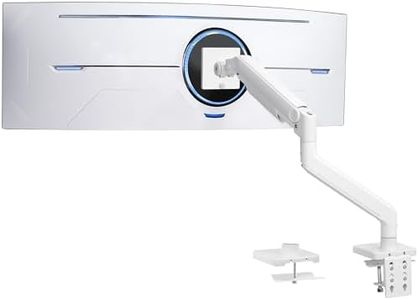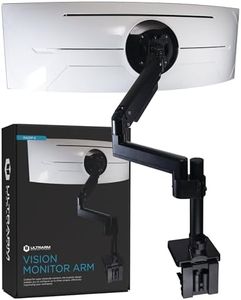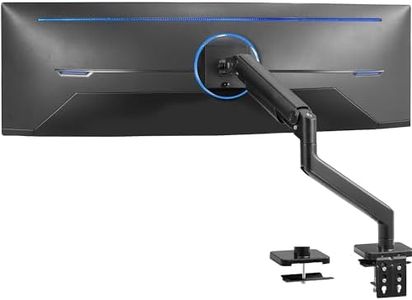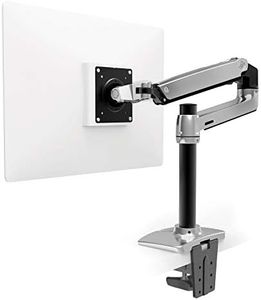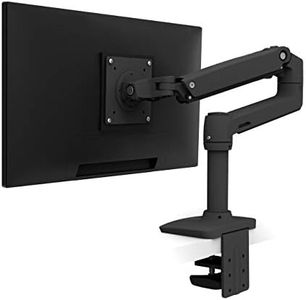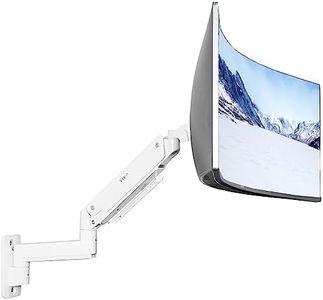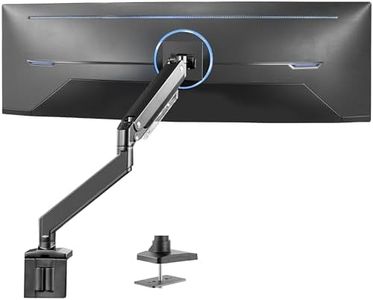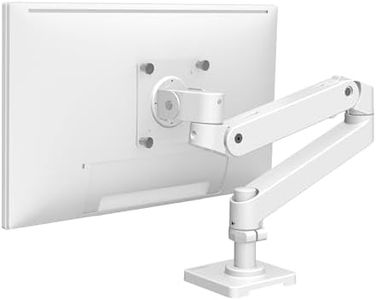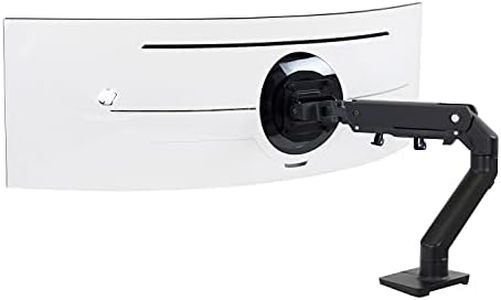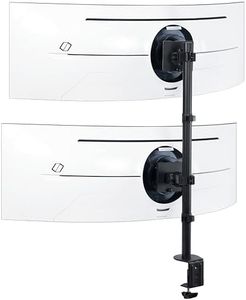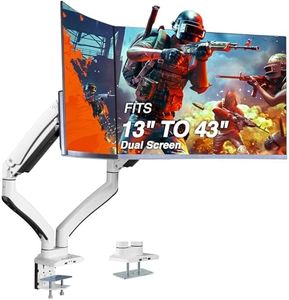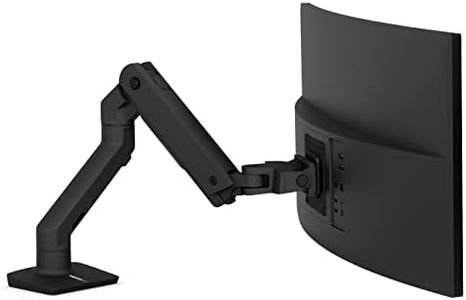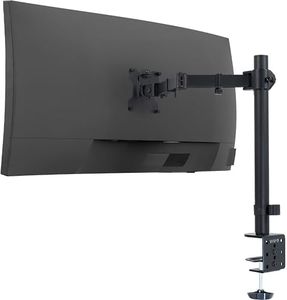We Use CookiesWe use cookies to enhance the security, performance,
functionality and for analytical and promotional activities. By continuing to browse this site you
are agreeing to our privacy policy
10 Best Ultrawide Monitor Mount
From leading brands and best sellers available on the web.Buying Guide for the Best Ultrawide Monitor Mount
When choosing an ultrawide monitor mount, it's important to consider both your workspace and how you use your monitor. Ultrawide monitors are heavier and larger than standard models, so you need a mount that can handle their weight and dimensions safely. Focus on the adjustability you need, the sturdiness of the mount, and how easily it fits your desk setup. By understanding the main specifications and how they match your daily needs, you can find a mount that provides comfort, flexibility, and security for your monitor.Weight CapacityWeight capacity tells you the maximum weight the mount can hold. This is crucial because ultrawide monitors are typically heavier than regular monitors. Mounts generally specify their safe weight limit, and exceeding this can result in instability or even damage. Mounts can usually be grouped by their weight range: light-duty (often up to 8 kg), mid-range (8-12 kg), and heavy-duty (12 kg or more). Check your monitor’s weight (with the stand removed) and choose a mount that exceeds this number to ensure safety and ease of movement.
VESA CompatibilityVESA compatibility refers to the mounting hole pattern on the back of your monitor, usually described in millimeters (like 100x100 mm or 200x100 mm). It's essential because the mount must match this pattern to attach securely. Ultrawide monitors may use larger or non-standard VESA patterns. Monitors and mounts are grouped by these numbers, so always check both your monitor and the mount's specs. Pick a mount that fits your monitor's VESA pattern to ensure a secure installation.
Mounting TypeThis is about how the mount attaches to your desk or wall, with common types being desk clamp, grommet, or wall mount. A desk clamp grips the edge of your desk, a grommet fits through a hole in your desk surface, and a wall mount secures the monitor to a nearby wall. Choose based on your desk layout, available space, and if you can or want to affix anything to the wall. If flexibility and portability are a priority, desk clamps are usually easiest to set up and move; wall mounts are best for saving desk space.
Adjustability and ArticulationThis refers to how much you can move your monitor on the mount, including height, tilt, swivel, and rotation options. Some mounts allow only tilt, while more advanced ones let you adjust height, pull the monitor forward/backward, and rotate it for portrait or landscape use. If you need to frequently reposition your monitor or share your screen, look for mounts with full articulation. If your monitor mostly stays in one position, less adjustability may suffice.
Arm Length and ReachArm length and reach describe how far you can extend the monitor from the mounting point and how much side-to-side movement is possible. Longer arms allow you to pull the monitor closer or push it further away. For larger desks or deeper workspaces, a longer reach can be beneficial. Consider your desk depth and preferred monitor distance—if you like your monitor close or need to move it out of the way, pick a mount with a longer reach.
Build Quality and MaterialBuild quality and material indicate how sturdy and durable the mount will be. Mounts can be made of steel, aluminum, or even reinforced plastics. Higher quality materials usually result in a more stable mount, which is especially important for heavy ultrawide monitors. If you want peace of mind and less wobble, prioritize mounts with mostly metal construction and proven durability.
